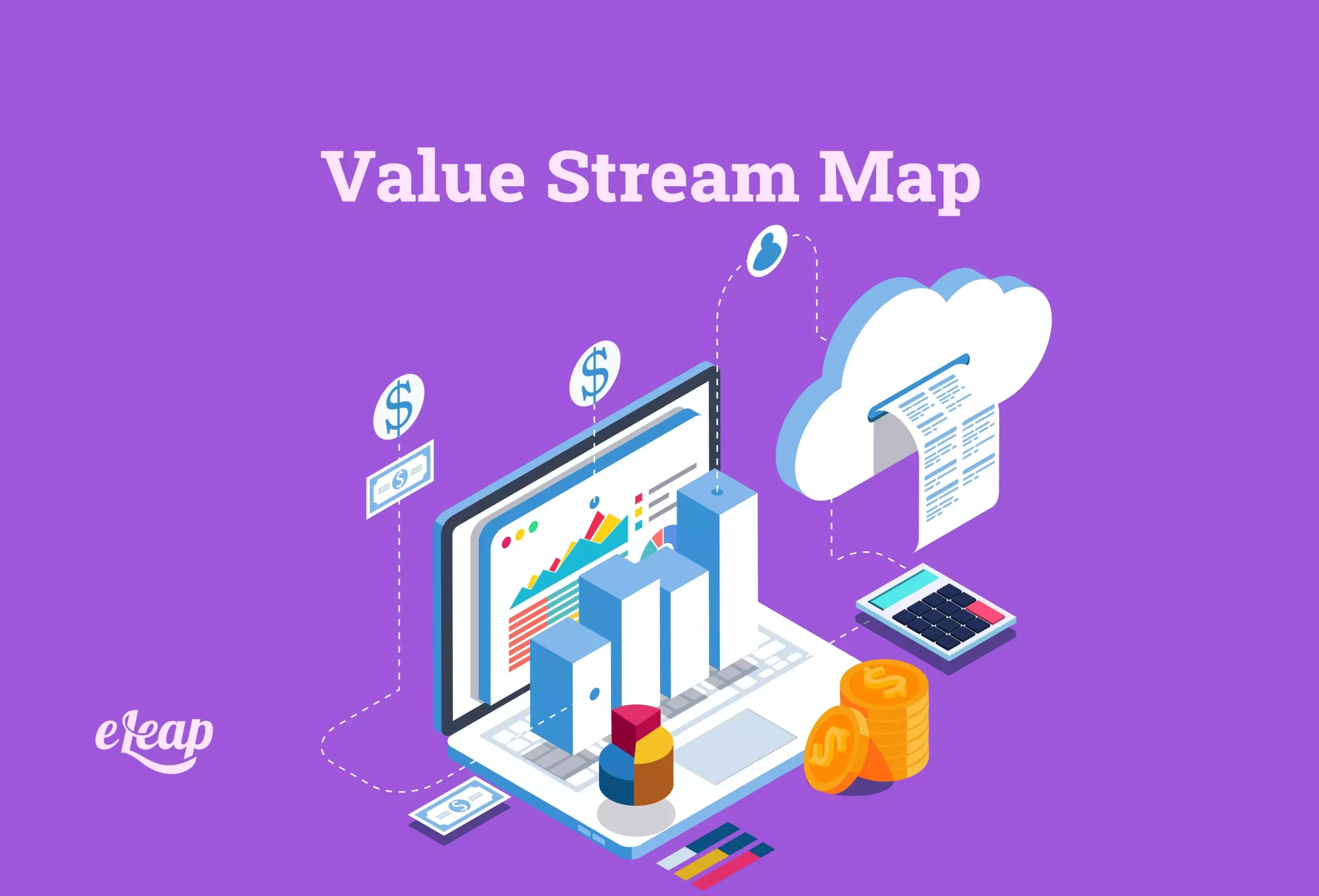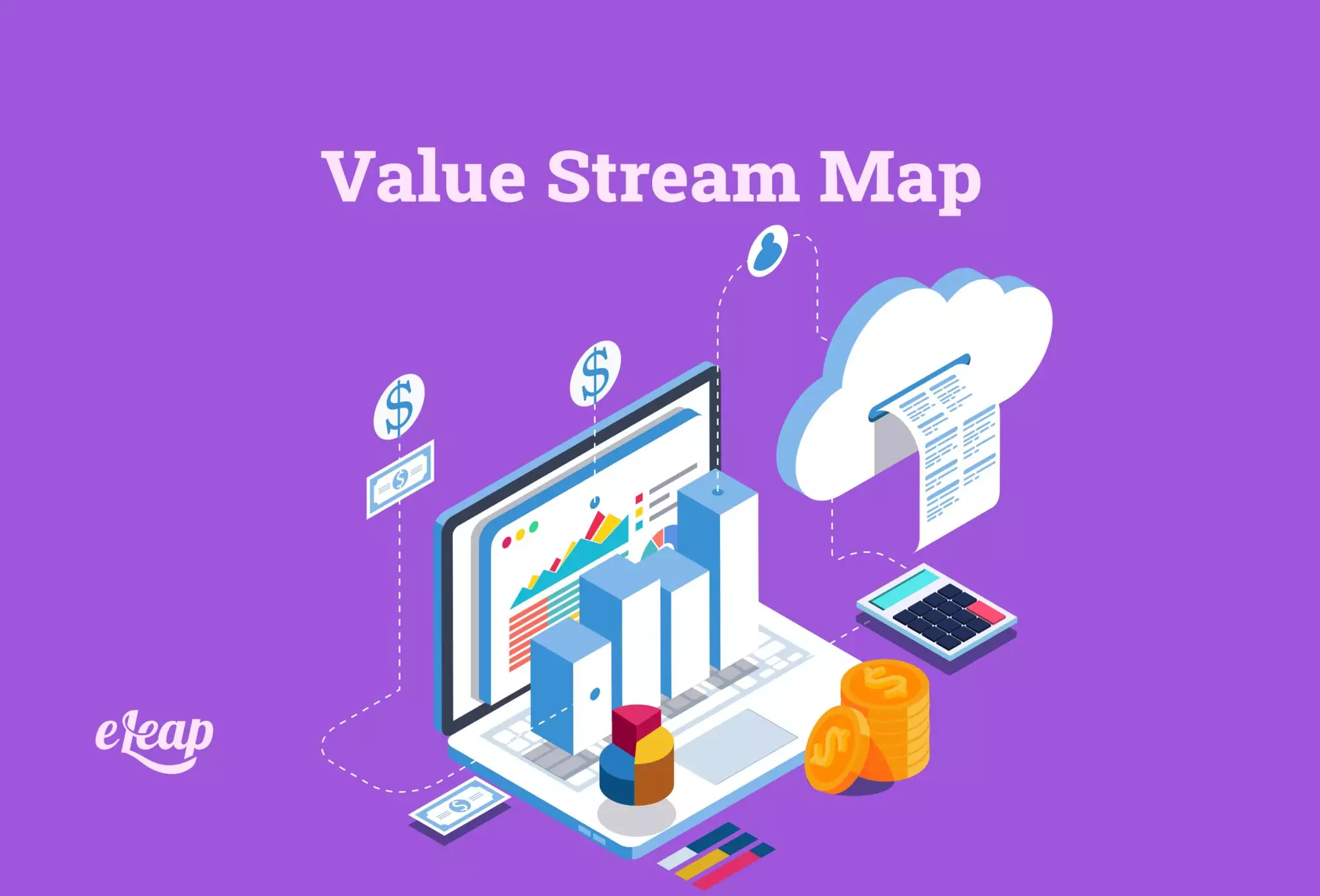Value Stream Map
How to keep everything running smoothly

Running a business is hard. There are millions of different small things that you have to keep an eye on, all of which require extreme attention and care to make sure that the company continues to run smoothly.

With businesses, even the smallest hiccup can cause large and widespread consequences, some that you might not even be able to guess.
Thus, having an organizing principle is a very important part of running a business. Partially because it helps to keep everything in order and to have records to refer to whenever you have questions, but it’s also important because it allows you to keep an eye out for anything that might be going wrong.
But how can you possibly keep everything working and in its proper order?
That’s where value stream mapping comes in.
What Is It?
Value stream mapping is a type of process that helps with business organization.
The value stream mapping process allows you to create a detailed visualization of all steps in your work process.
To define it another way, a value stream mapping process allows you to see, step-by-step, how you will get from the beginning to the end of any specific process that you’re planning.
A value stream mapping process is a representation of the flow of goods from the supplier to the customer throughout your organization.
For example, the value an educational company delivers to its clients (likely teachers and students) is lesson plans and their solutions, as well as teaching mechanics and example problems.
In this specific situation, a value stream map would display all the important steps of your work process that you must follow to deliver what you’ve promised the customer from start to finish.
How Does It Work?
The value stream map allows you to visualize every task that your team works on and provides single-glance status reports about each assignment’s progress.
It is an essential part of running a business, especially when you need to clarify the value of your process.
Keep in mind that when it comes to value stream maps, you may have additional steps on there. These steps are those that are necessary to complete the process but aren’t directly helpful to your customer.
For example, this could be quality tests, reference checks, performance management, and the like. These necessary steps are things that are required for you to deliver what you promised to the client. However, they are steps that aren’t necessary for the client to know about.
Because these sorts of checks do nothing for the customer and tend to not even be known by the customer, you are unlikely to get paid for these sorts of processes.
Having said that, if you skip these checks because you know you won’t get paid for them, you’ll likely end up producing a bad and buggy product that is full of false information.
If you give a client a bad product, they are unlikely to want to work with you again. As such, trying to save money by skipping quality testing steps will lose you money in the future.
Why Is It Important to Use Value Stream Mapping?
When it comes to value stream mapping, the point is to maximize the value of your business without using lots of resources.
Or, to describe it another way, you’re trying to maximize the value of your product while minimizing waste in different ways.
Some of the ways that help to do this are:
- Facilitating clear communication and collaboration
- Encouraging continuous improvement of a process
- Enabling culture change within an organization
- Creating visualizations of delays, excess inventory, and production constraints
Interestingly, these ideas originated about 70 years ago at the Toyota Production System. Back then, Toyota was highly regarded, and as such, when they started using value stream mapping, other organizations did the same, as well.
Toyota established requirements that, when an error occurred during an automated process, all levels and elements of production would be halted until the error could be found and fixed.
This attention to detail and determination to make sure that every step of the process worked smoothly and as expected allowed Toyota to consistently make quality products at top speed. It allowed them to have enough supply to keep up with the demand.
Why It Works
What was so innovative about what Toyota did is that they established the entire flow of their car automation process, which allowed them to accurately pinpoint exactly where an error occurred without having to comb through every step over and over again.
With Toyota – and now, with all types of value stream mapping—each step in the flow informed the next, which led to an increase in production speeds while lowering the cost of each process. It also allowed them to maintain the quality they were known for.
This framework is nowadays called value stream mapping, and it’s used by several organizations today around the world. In truth, although the necessary quality test aspects are necessary to create quality products for the customers, in truth, these “useless value” tasks make up nearly 90% of an actual process.
Value Stream Mapping Cons
Although there are several positives to using value stream mapping (many of them already mentioned above), in truth, there are some downsides, as well.
Having said that, these downsides are a necessary evil in the process. A good business will find a way to deal with these downsides without removing them entirely.
In essence, value stream mapping as a whole can be pretty wasteful, especially if you’re not careful.
You have to make sure that whatever effort you’re putting into your product and your value stream mapping is balanced by the potential value you will receive from the customer and the amount you will save during the process.
Stated another way, you have to make sure that whatever you are getting in return for your efforts in making a client’s product is worth the amount of time, energy, and money you’re putting into it.
How To Correctly Make and Use Value Stream Mapping
One way to make sure that you do this is to involve knowledgeable people in your business from the beginning. You can make sure that you follow the advice and information of these sorts of people to make sure that you’re not putting more effort into a product than you’re getting out.
These people will help you create value stream mapping charts that are helpful and specific to your organization so that you can figure out what your inputs and outputs are. It’s doubly good to make sure you get help from people “in the know” because figuring out a value stream map that works for you can be very complex and persnickety.
Fear and uncertainty are common symptoms when value stream mapping is conducted, and so the process of identifying waste can be intense. If you try to create a value stream map on your own, you may find that you’re notating things as “waste” that are important and vice versa.
Especially if you’re not familiar with value stream mapping, it can be easy to make mistakes. You might think that improving a step here and a step there will rake in savings for sure. However, whatever you decide to improve on your own may not directly translate to a bottom-line improvement until you go through and tweak the entire process.
Baby steps are important! Don’t jump straight into ripping your whole idea apart—instead, start small and see if you notice that your changes are proving to be worthwhile choices.
Also, start small. Rather than immediately running to the Internet and clogging your hard drive with templates upon templates of value stream mapping charts, try to get a general idea of what you want out of a process just using a basic pencil and eraser sketch. This will allow you to massage out any bad elements before you take your idea to a professional.
Overall, doing value stream mapping is fine, yet overdoing it can be problematic.
Value Stream Mapping in Different Fields
Different fields gain different benefits by using value stream mapping. There are even some that may gain benefits you might not have even thought about.
- Manufacturing: Value stream mapping helps manufacturing organizations find waste in the production process by analyzing each step of material handling and information flow. This is the original type of value stream mapping that Toyota used back in the 50s.
- Supply chain and logistics: Value stream mapping helps supply chain and logistics-focused organizations to root out waste and costly delays at the various points on the supply chain leading to the finished product.
- Software engineering/development: Value stream mapping helps software engineering and development organizations find inefficiencies in software development, from ideas to implementation, including feedback loops and rework.
- Agile development environments: Value stream mapping helps these sorts of developmental environments gain efficiencies, such as reducing the wait time between steps or reducing the need for reworkings
- Service industries: Value stream mapping helps service industry organizations improve the value and find waste in the activities required to carry out any service for external customers.
- Healthcare: Value stream mapping helps healthcare organizations improve the steps required to treat patients in the most effective, timely, cost-efficient, and high-quality way possible.
- Office and administrative: Value stream mapping helps office and administrative organizations find wasteful steps and improve the service provided within a business to internal customers.
No matter the type of organization you’re running, it’s highly possible that there are areas that may be running inefficiently. If that is happening to you, you might try to get a value stream map for your business to better see where you’re wasting time, energy, money, and resources.